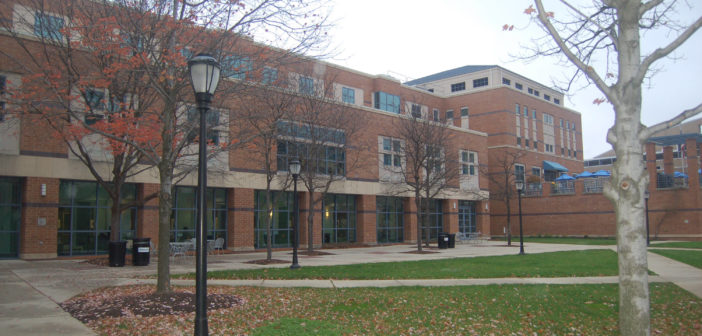Lehigh’s business program, presently housed in Rauch Business Center, is in the process of planning to build a new facility to accommodate the university’s No. 32 ranked undergraduate business school.
In early October, with the support of the university’s board of trustees, President John Simon announced plans to expand Lehigh and allow it to become more competitive among higher education institutions. This expansion, known as the “Path to Prominence,” will bring about changes throughout the university.
“The ‘Path to Prominence’ is everybody and we all contribute to it in different ways,” said Georgette Phillips, the dean of the College of Business and Economics.
Phillips said an architect hasn’t been hired yet, but a walk-through of Rauch Business Center has been scheduled for the end of November for those who are interested in submitting proposals. She said the process will take at least two years.
Once proposals have been submitted, a faculty committee, among others, will meet in January to choose the architect who will do the study drawing over the next few months.
Phillips said the location of the new building has yet to be determined, but it will be on Asa Packer Campus. She said the building may be an expansion on the current building or it may be an entirely new facility.
She said Rauch will undergo renovations and will remain part of the business school.
Phillips said the plans for a new business building arose because there is not enough room to accommodate students and staff in the current building, which wasn’t built for the amount of people who are presently using it.
Thomas Hyclak, a professor of economics, said the macroeconomics course he teaches from 11:10 a.m. – 12:25 p.m. on Mondays and Wednesdays meets in Mohler Lab because Rauch is too crowded during “prime class times” in the middle of the day. He said if the class were at 7:45 a.m., instead, it would be held in Rauch.
“There are so many ways in which this building in its present structure is holding us back from being a full-fledged business school,” Phillips said.
McKay Price, an associate professor in the department of finance, said although the current building was built in 1990, it was not built to 1990 standards. He said, instead, it was built to standards of an earlier era.
“We have some archaic components to the way our classrooms are set up,” Price said.
Phillips said the structure of the current building requires professors to teach in a way that prevents students from learning. She said the building is built for lecture-based learning and doesn’t allow students to work together.
“It assumes that students are continuing to be passive recipients of knowledge, whereas more and more we want students to be co-creators of knowledge,” Phillips said.
Price teaches a class on case studies in real estate value creation in a room in the Center for Innovation and Learning in Fairchild-Martindale Library. He said there is a large monitor in the front and modular furniture that can be reconfigured to surround smaller monitors throughout the room. Walls covered in whiteboard paint allow for more hands-on, group learning.
Price said many business schools at similar institutions across the country have spaces that differ from the traditional model of rows of students lined up facing one monitor at the front of the classroom.
“Teaching technology has evolved, and our rooms (in Rauch) don’t necessarily reflect that,” Price said.
Phillips said one of the biggest differences between the new and current buildings is that the new one will be home to a program for executive education, which is for those who are a part of the working world but need specific classes to further their knowledge.
“Education is a life cycle, not a one-shot deal, and we want to serve the entire span of a person’s educational life,” Phillips said.
She said the new building would also have more professors, classrooms, faculty offices, study and group project spaces and student congregation spaces.
Price said the classrooms would be traditional but would contain more modern features.
“It’s very important for a business school in particular to have a first-class building because we have so many people from the outside, from the industry, coming here, that if we don’t have a first-class building, we don’t look like a first-class player,” Phillips said. “And we are.”






Comment policy
Comments posted to The Brown and White website are reviewed by a moderator before being approved. Incendiary speech or harassing language, including comments targeted at individuals, may be deemed unacceptable and not published. Spam and other soliciting will also be declined.
The Brown and White also reserves the right to not publish entirely anonymous comments.